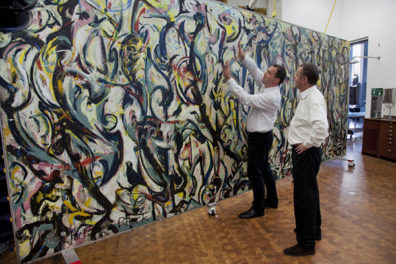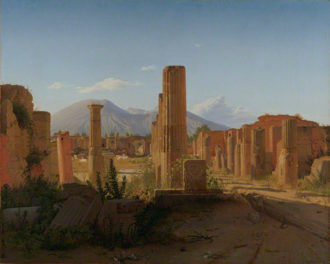Photographer Susan Meiselas appears at the Getty Center this Friday evening to talk about her work and screen her 1991 film
Pictures from a Revolution. Joining her to discuss the depiction of Latin America is Miguel Tinker Salas, professor of Latin American studies at Pomona College.

Traditional Indian dance mask adopted by the rebels during the fight against Somoza, Nicaragua, Susan Meiselas, negative 1978; print 1980s © Susan Meiselas / Magnum Photos
In 1978, Meiselas went to Nicaragua. She left with no concrete plan, speaking no Spanish, and having no place to stay—and arrived to a brewing insurrection. She witnessed, and recorded, the full-scale revolution that erupted against the Somoza dictatorship in August 1978, photographing in Nicaragua through the revolutionaries’ victory in July 1979. The powerful photographs of those events are featured in the exhibition
Engaged Observers: Documentary Photography since the Sixties, on view through November 14.
Among Meiselas’s innovations was her use of color. She made a decision—at the time, somewhat unusual in serious war reportage—to record the revolution on color film, because it seemed appropriate for capturing the vibrancy and optimism of the resistance.
Meiselas’s photographs are formally beautiful in both color and composition, but it is people, not aesthetics, that drive her work. She was taken by the bravery of those willing to risk their lives against the dictatorship, and she took pains to photograph the action from their perspective.
Here’s how Meiselas described her connection to her subjects in “Nicaragua: Thirty Years Later,” a 2007 interview published with the DVD of her film:
A frozen life in a photograph is perplexing for me…I suppose it’s part of the “going back” that I am often inclined to do. As much as I like the formalism, I am propelled to reconnect. I seek the feeling that comes from the connection. I think that moment of engagement is ultimately what sustains me as a photographer.
Pictures from a Revolution, which chronicles Nicaraguans’ intensely personal experiences of the revolution and its disappointing aftermath, was likewise motivated by this desire for connection with the people she had met 12 years earlier. And in 2004, on the 25th anniversary of Somoza's overthrow, Meiselas visited Nicaragua once again, installing 18 of her photographs on the sites where they had been taken and inviting Nicaraguans to speak about their history.
To learn what Meiselas learned on her return, and to hear about her other documentary projects, we invite you to join us tonight—the event is free and
you can make a reservation here.





Comments on this post are now closed.